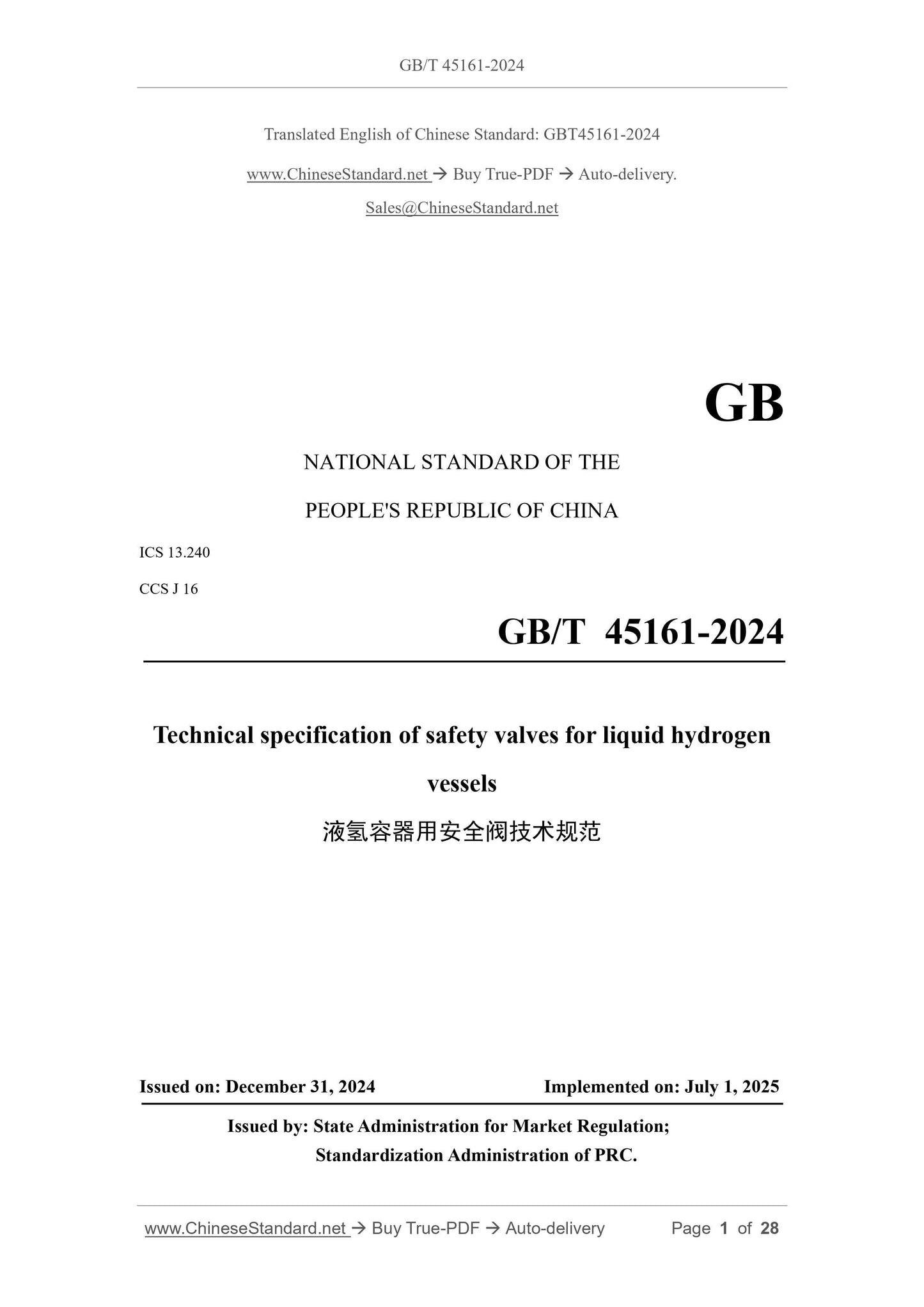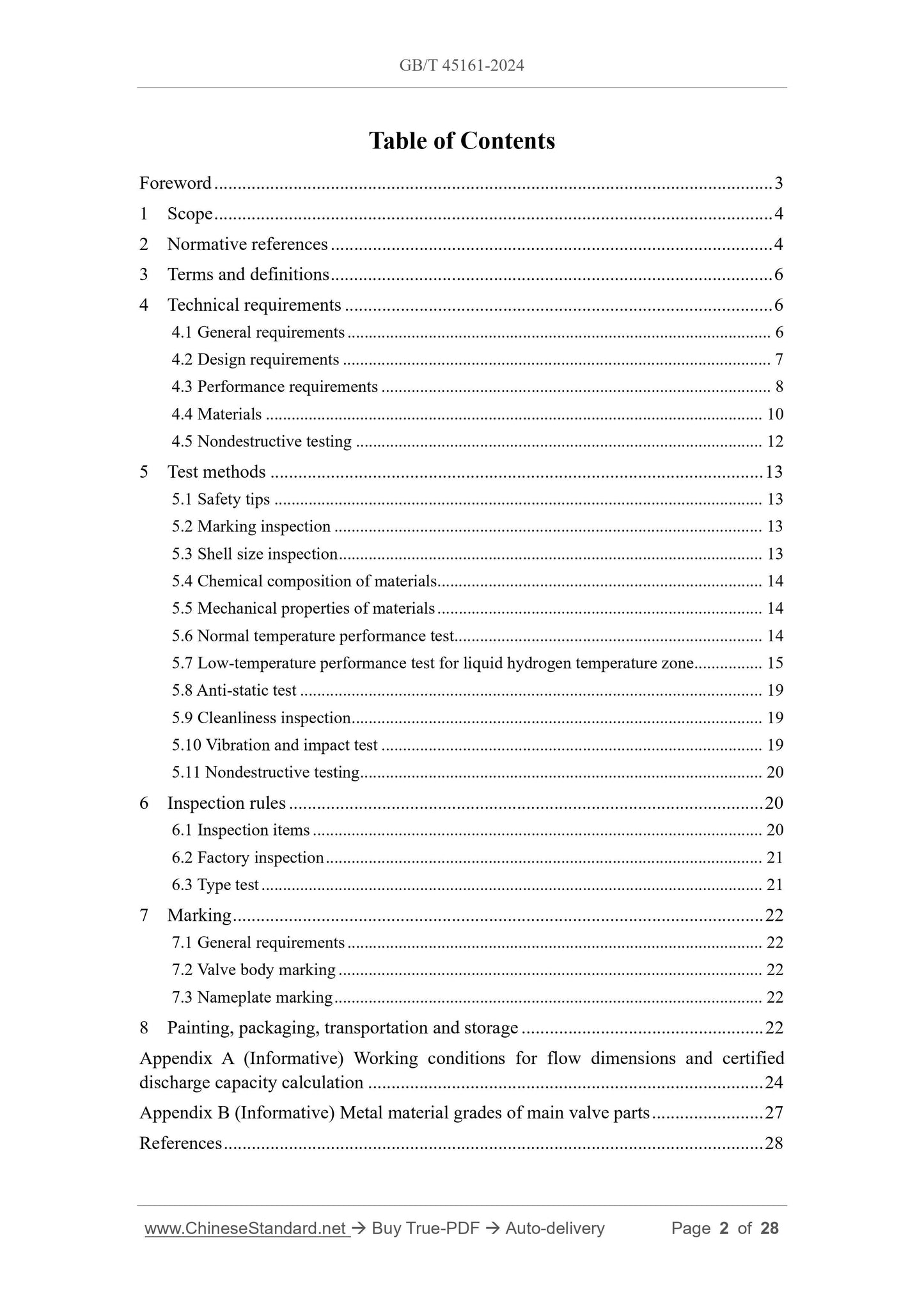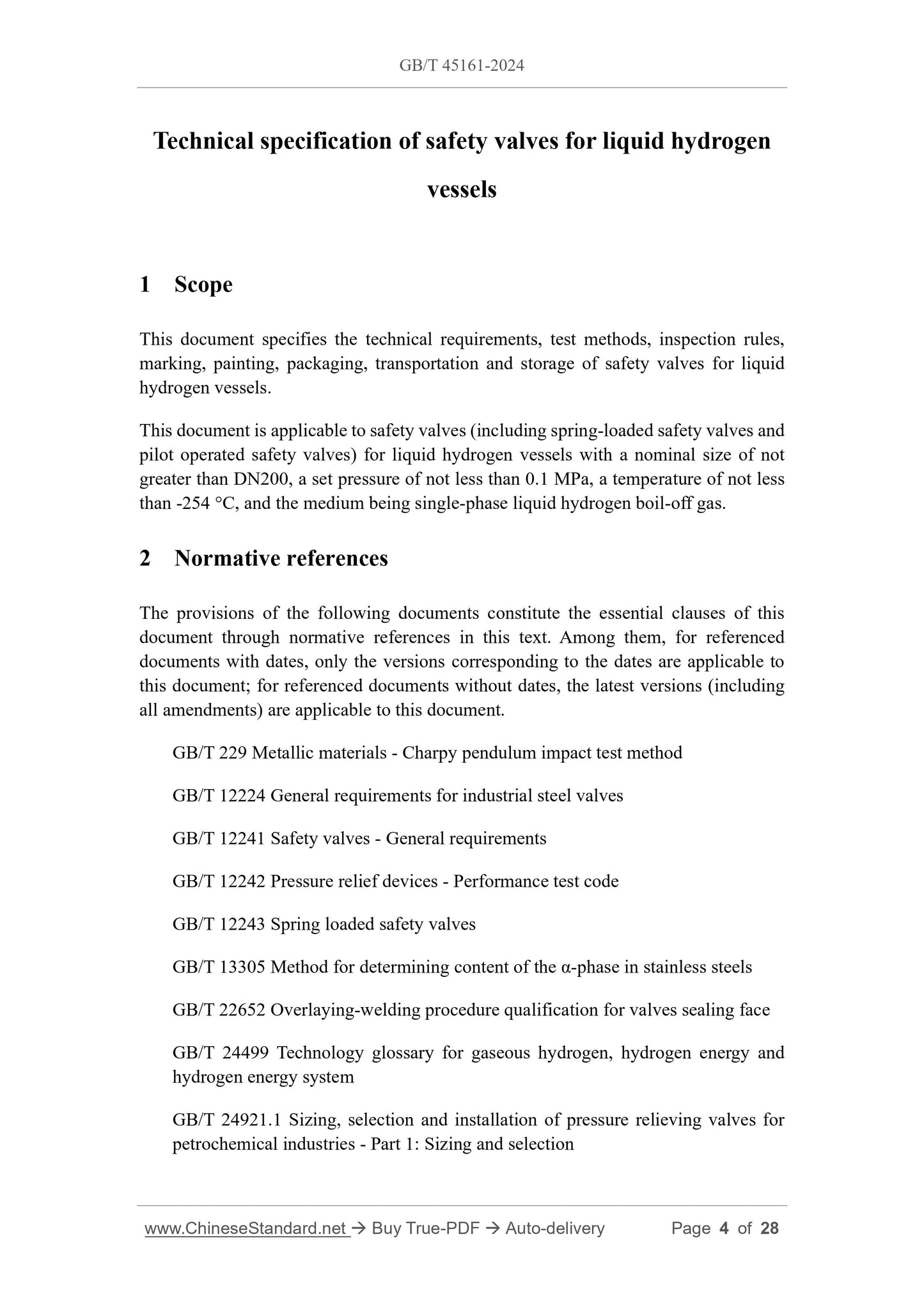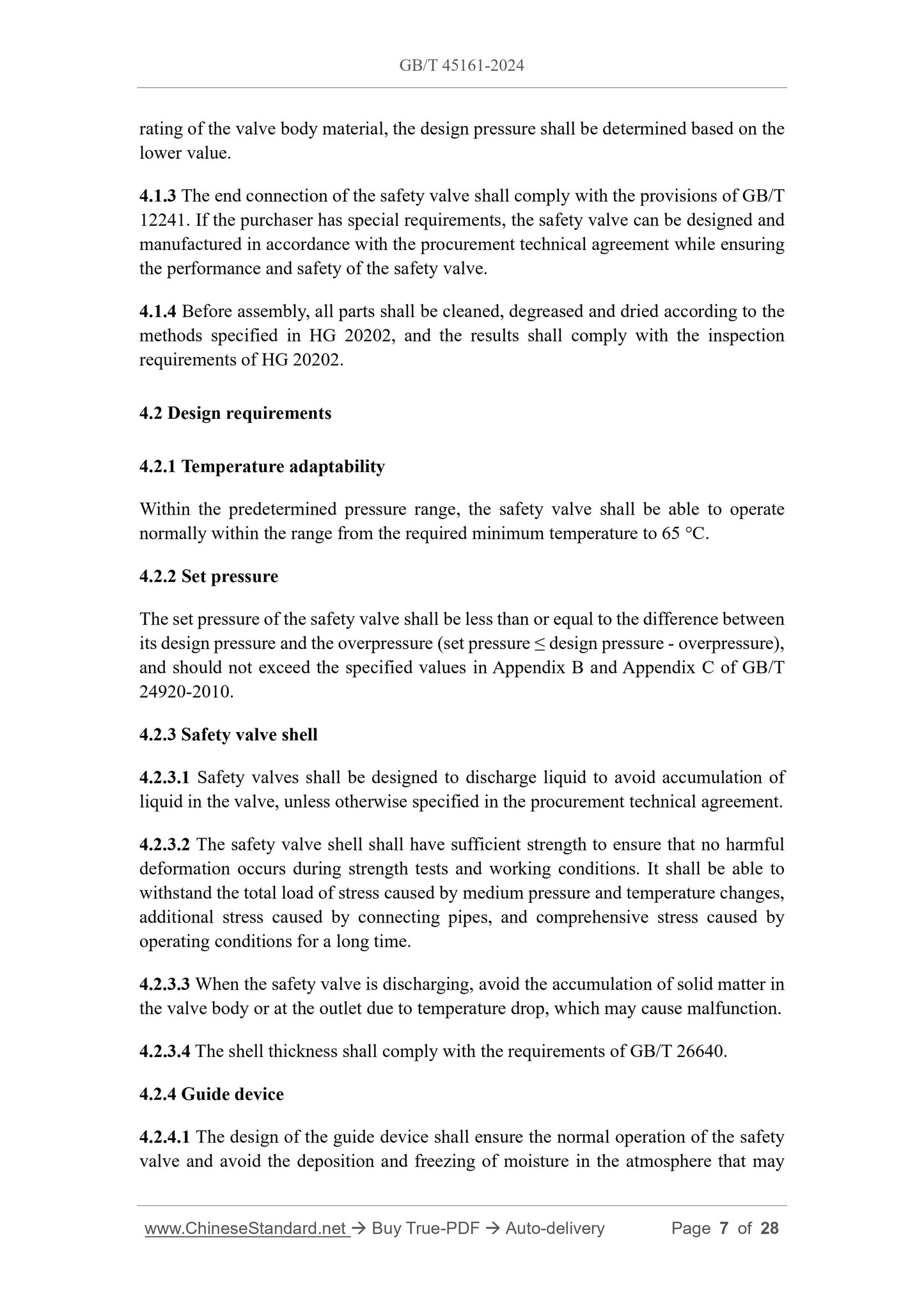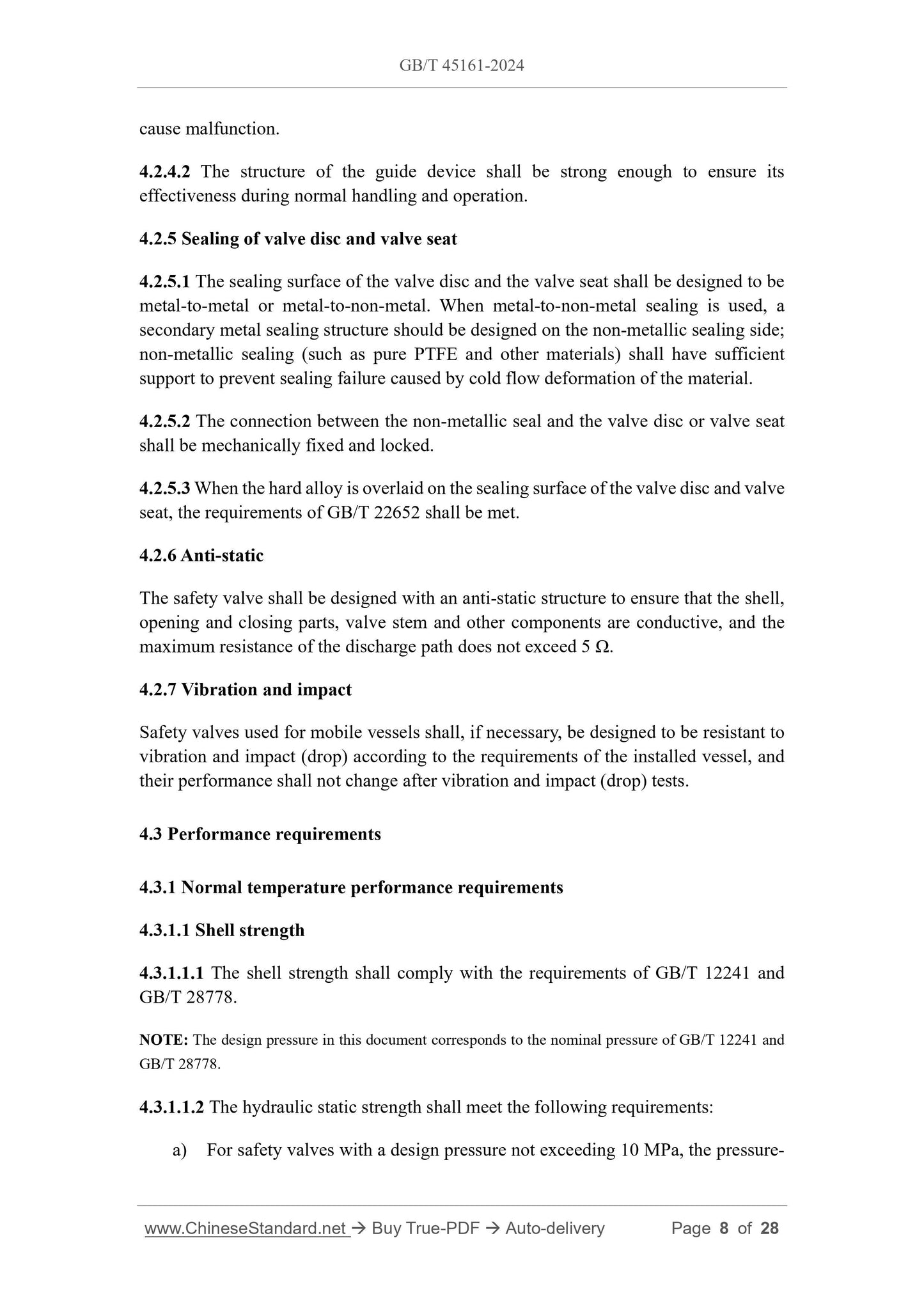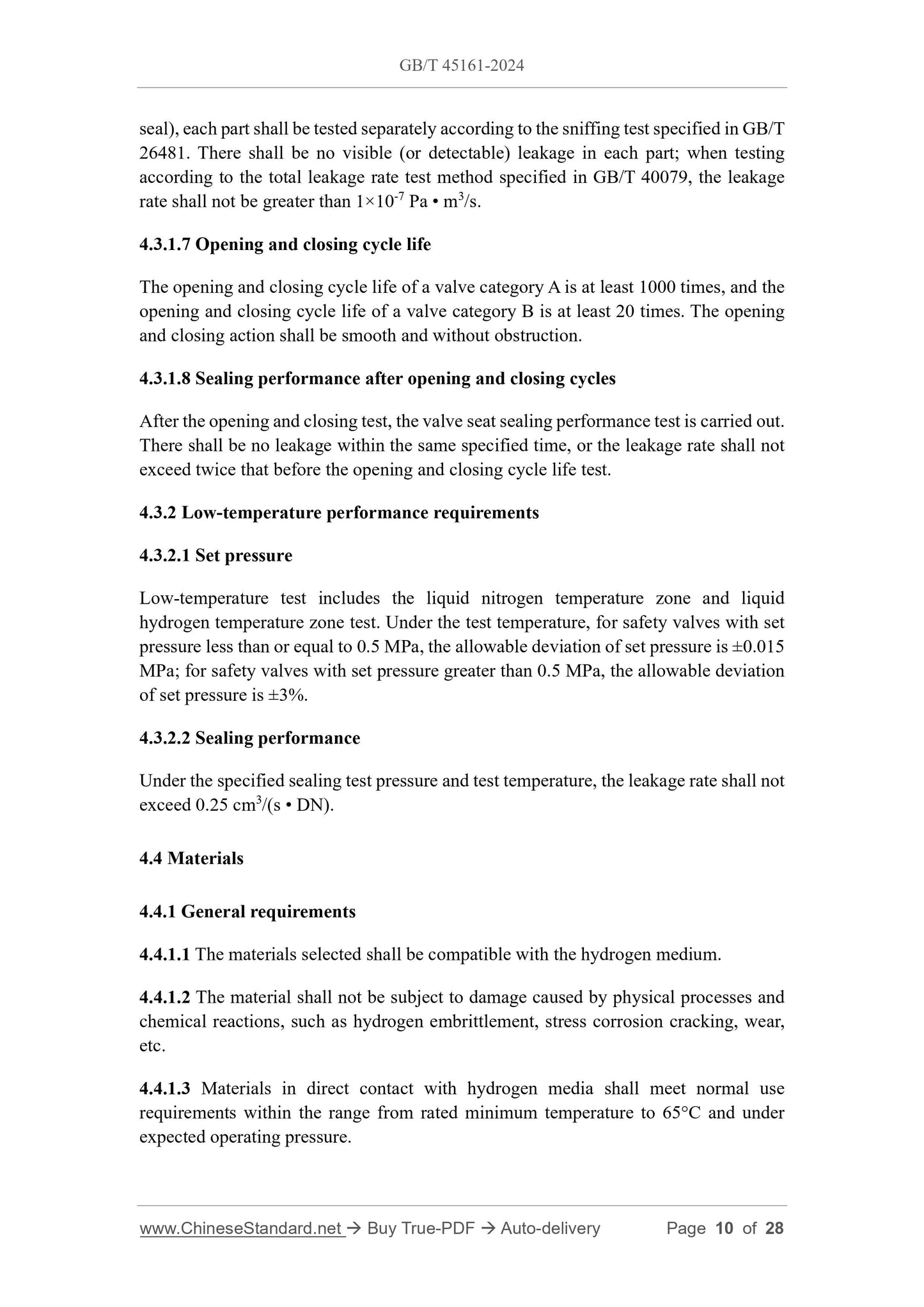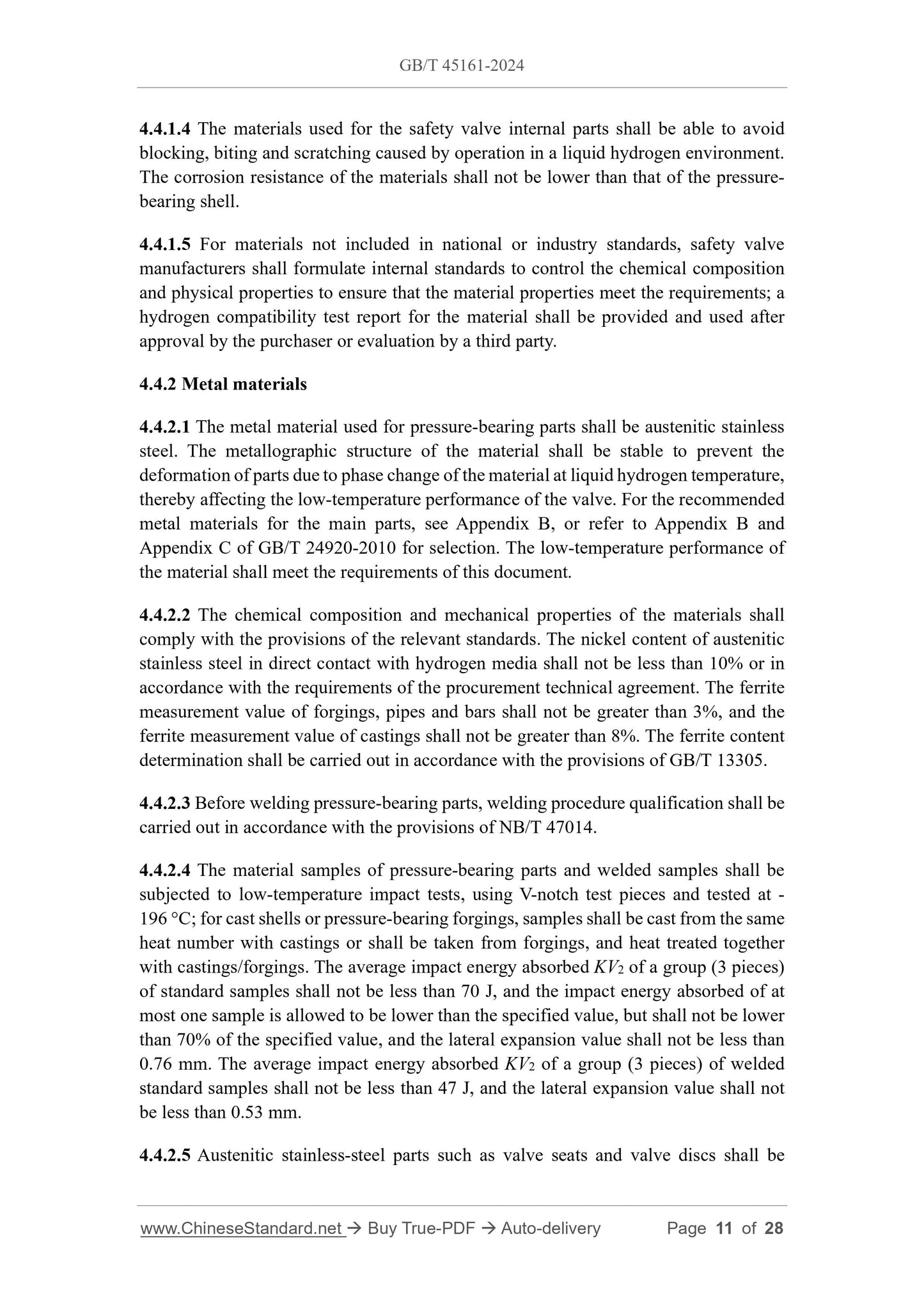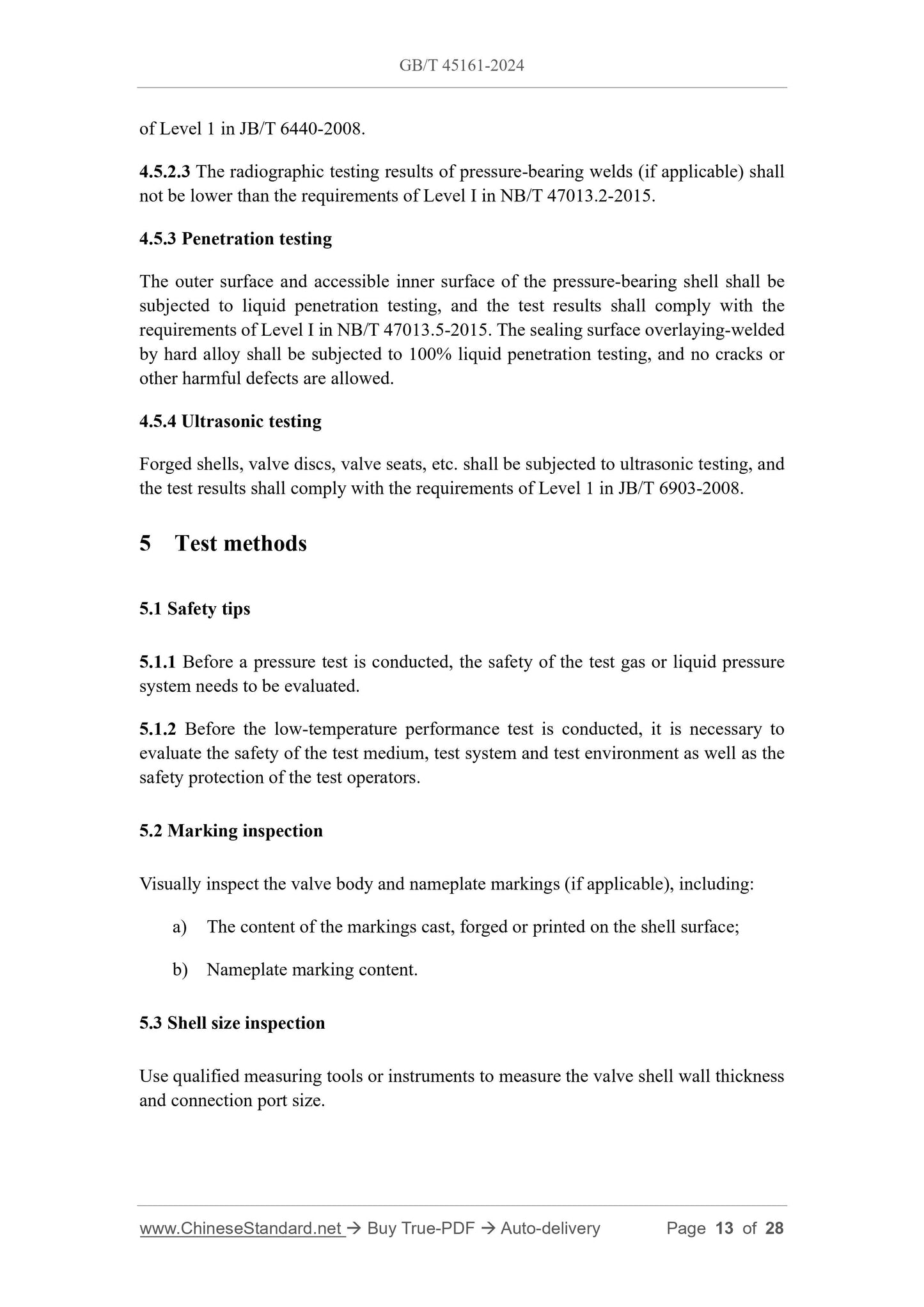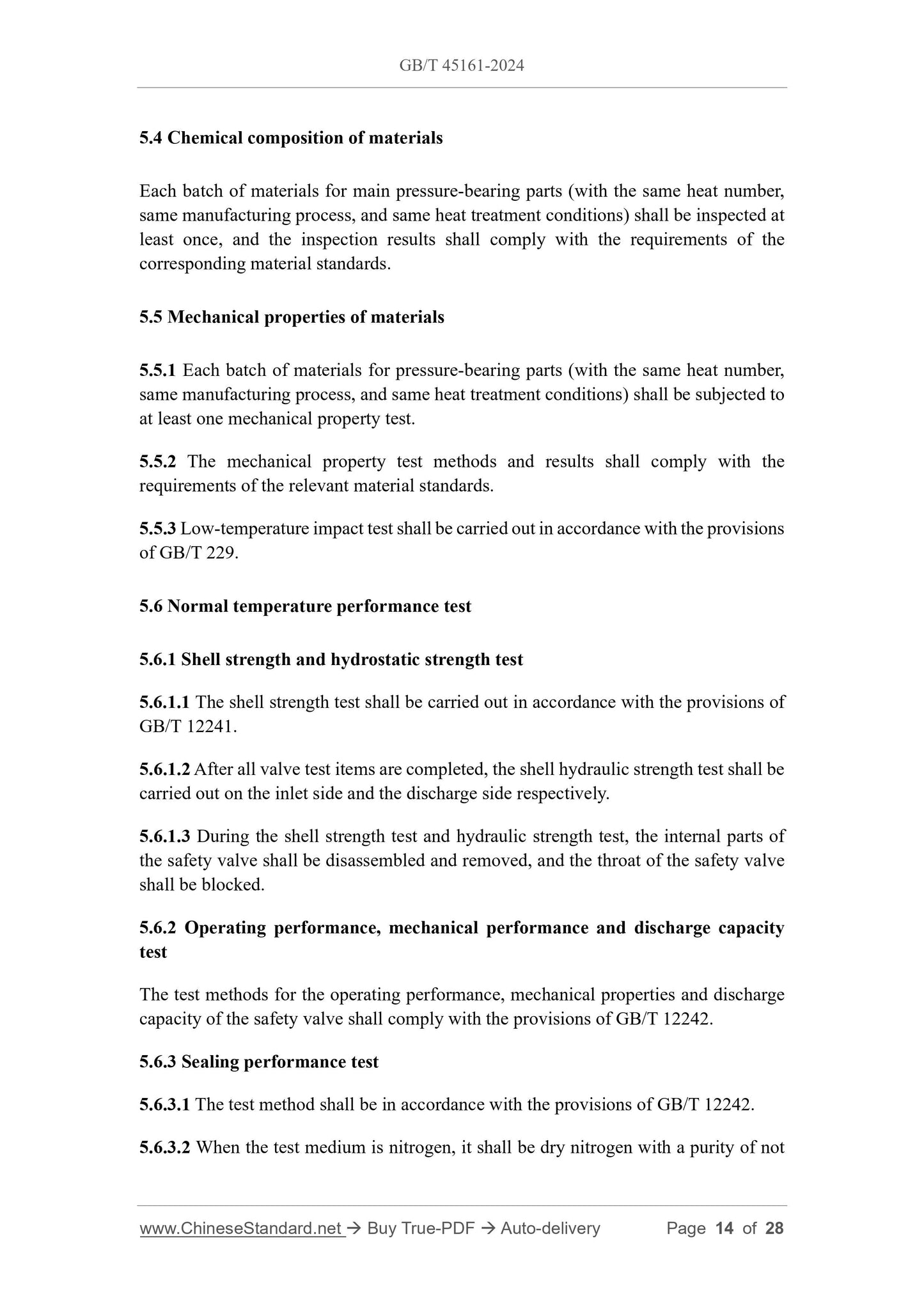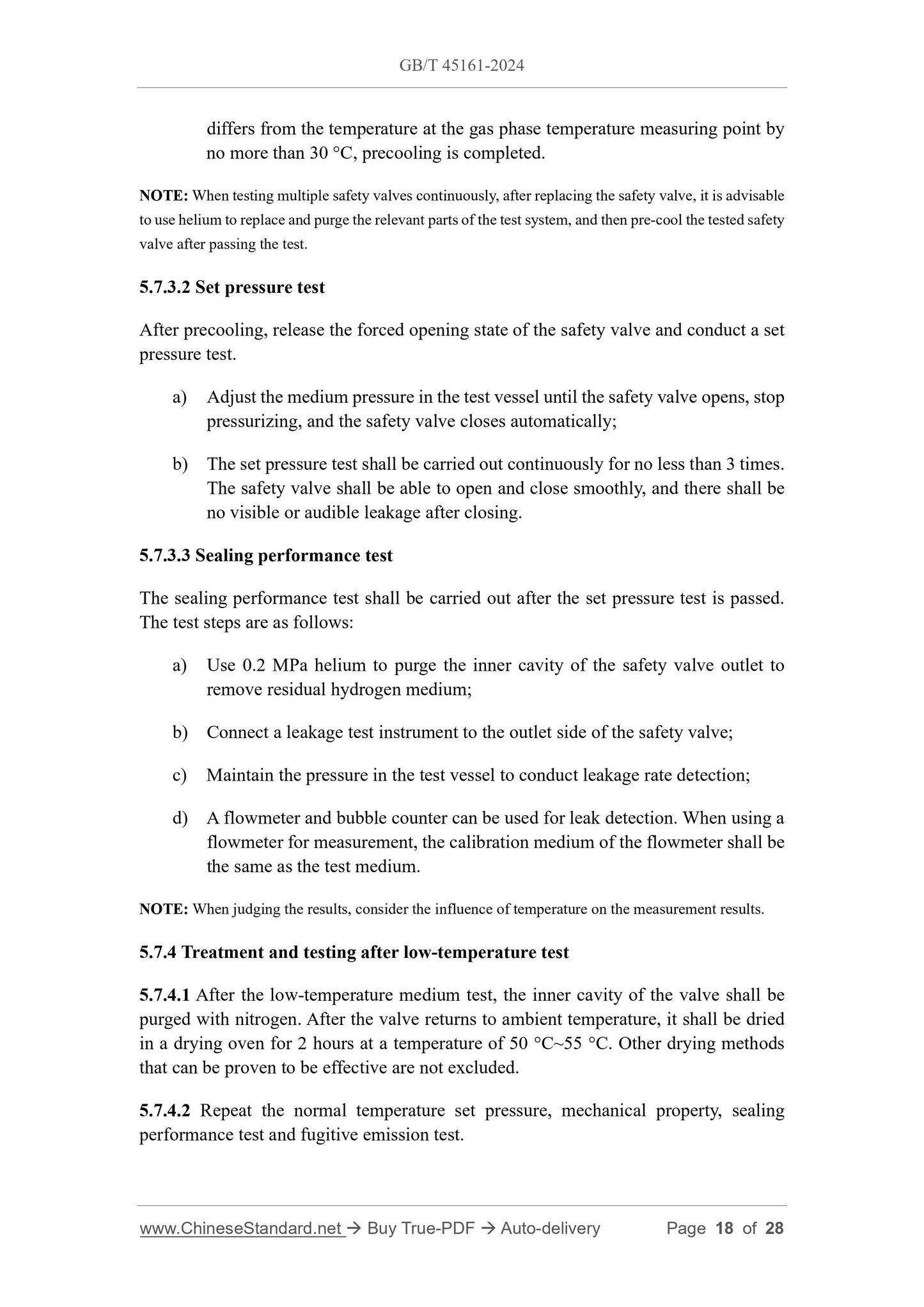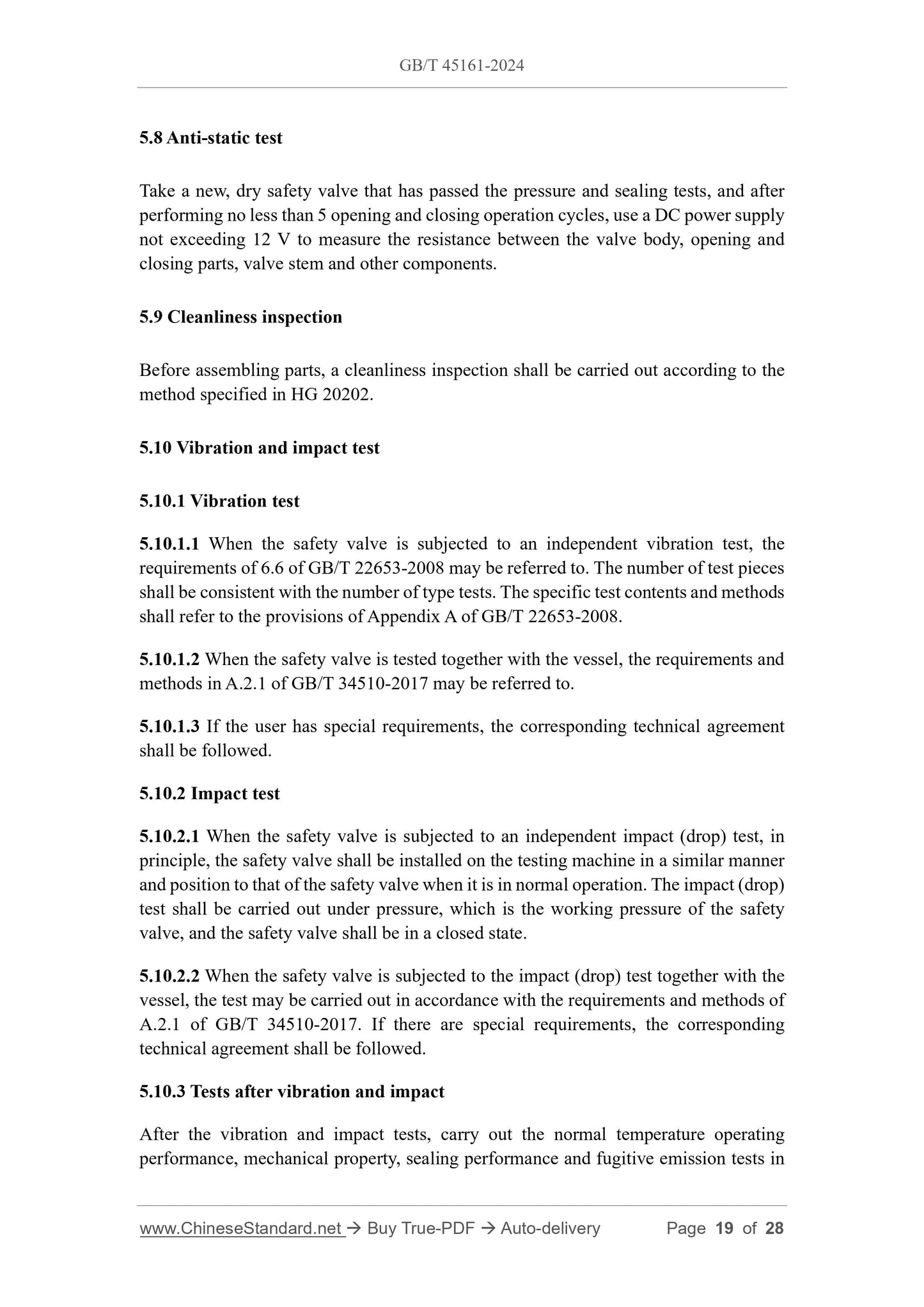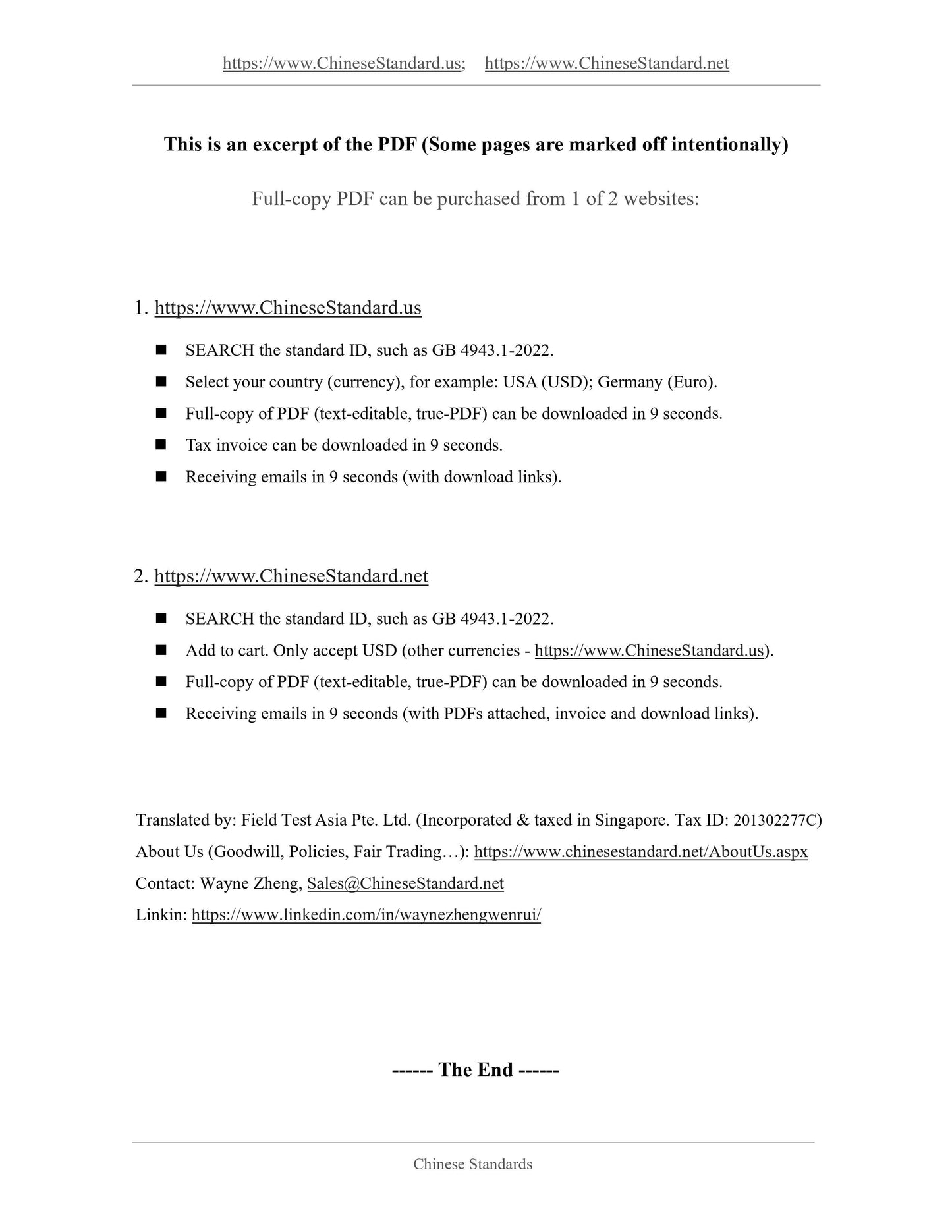1
/
of
12
www.ChineseStandard.us -- Field Test Asia Pte. Ltd.
GB/T 45161-2024 English PDF (GB/T45161-2024)
GB/T 45161-2024 English PDF (GB/T45161-2024)
Regular price
$380.00
Regular price
Sale price
$380.00
Unit price
/
per
Shipping calculated at checkout.
Couldn't load pickup availability
GB/T 45161-2024: Technical specification of safety valves for liquid hydrogen vessels
Delivery: 9 seconds. Download (and Email) true-PDF + Invoice.Get Quotation: Click GB/T 45161-2024 (Self-service in 1-minute)
Newer / historical versions: GB/T 45161-2024
Preview True-PDF
Scope
This document specifies the technical requirements, test methods, inspection rules,marking, painting, packaging, transportation and storage of safety valves for liquid
hydrogen vessels.
This document is applicable to safety valves (including spring-loaded safety valves and
pilot operated safety valves) for liquid hydrogen vessels with a nominal size of not
greater than DN200, a set pressure of not less than 0.1 MPa, a temperature of not less
than -254 °C, and the medium being single-phase liquid hydrogen boil-off gas.
Basic Data
| Standard ID | GB/T 45161-2024 (GB/T45161-2024) |
| Description (Translated English) | Technical specification of safety valves for liquid hydrogen vessels |
| Sector / Industry | National Standard (Recommended) |
| Classification of Chinese Standard | J16 |
| Classification of International Standard | 13.240 |
| Word Count Estimation | 22,284 |
| Date of Issue | 2024-12-31 |
| Date of Implementation | 2025-07-01 |
| Issuing agency(ies) | State Administration for Market Regulation, China National Standardization Administration |
Share
